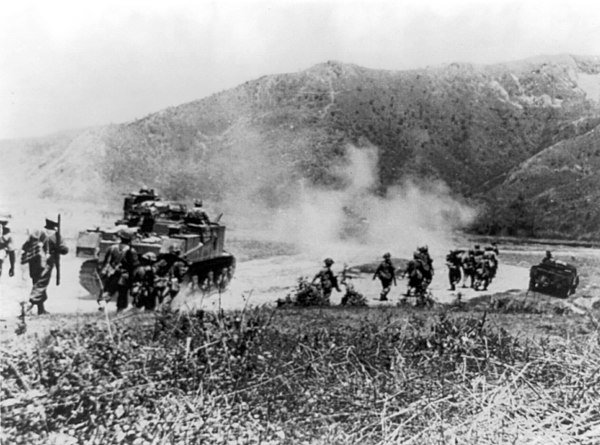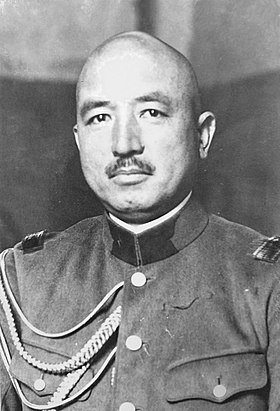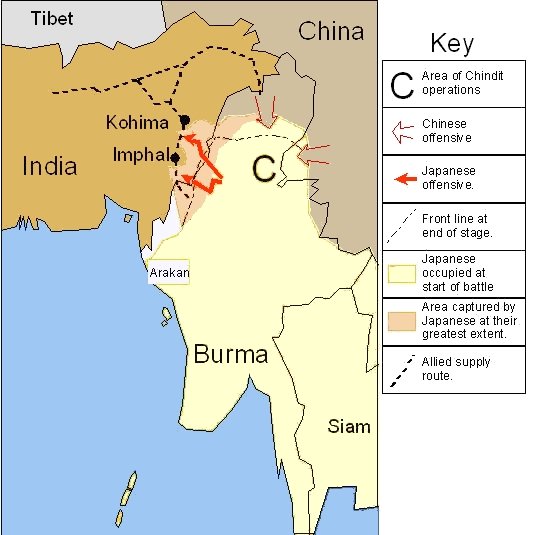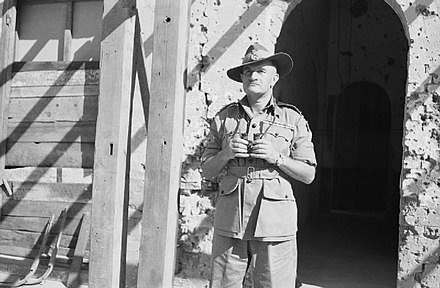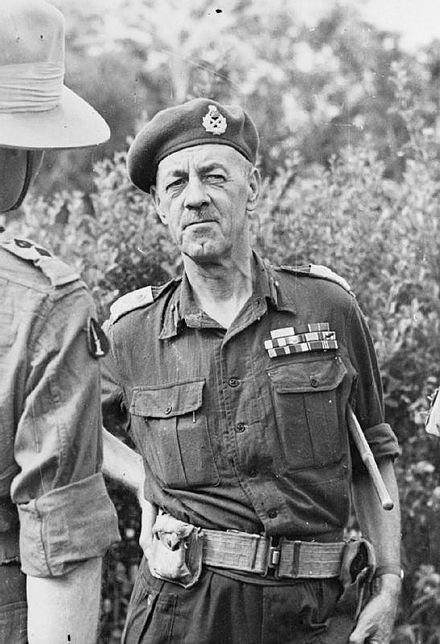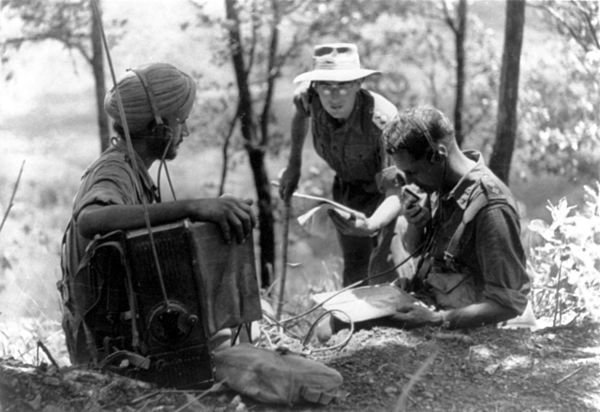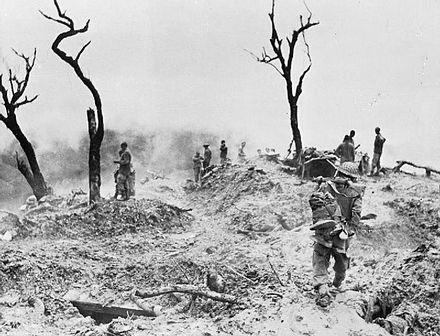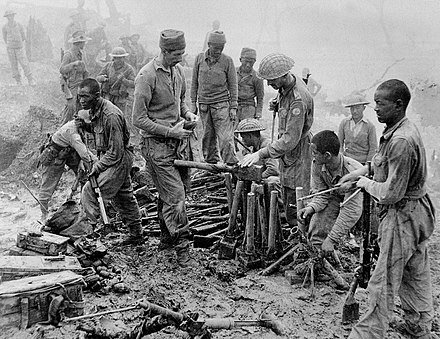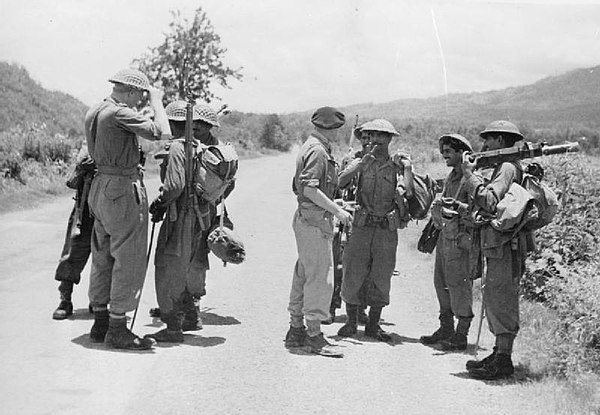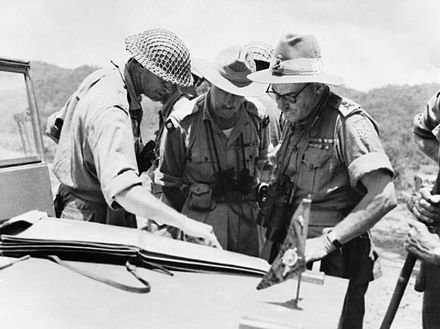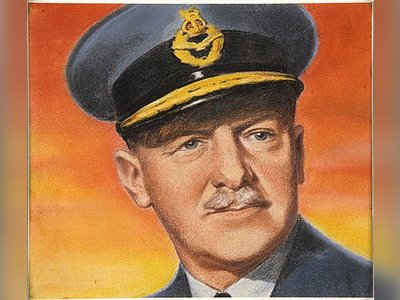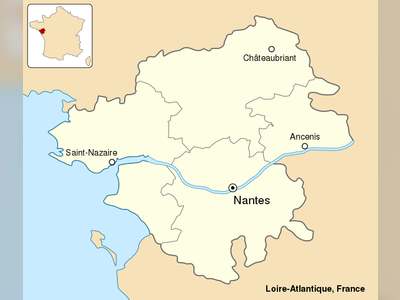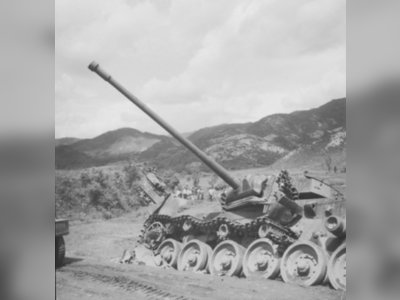British Heritage
Remember, Cherish, Learn.
beta
Battle of Imphal
Contribution of the Battle of Imphal to British Heritage.
The Battle of Imphal, fought in the region around the city of Imphal, India, from March to July 1944, holds significant importance in British heritage. It was a pivotal event during World War II, specifically in the South-East Asian theatre, where the British Empire was engaged in fierce combat against the Imperial Japanese forces. The battle, along with the simultaneous Battle of Kohima, marked a turning point in the Burma campaign, part of the Allied effort to counter the Japanese advances in the region.
The battle's legacy lies in its successful defense of Imphal and the subsequent drive to push back the Japanese forces into Burma. The Allied forces, comprising British, Indian, and Gurkha troops, demonstrated resilience and determination in the face of a formidable enemy onslaught. The victory at Imphal bolstered the morale of the British Empire and its allies, and it showcased the effectiveness of coordinated multinational operations.
This critical triumph not only halted the Japanese invasion of India but also had broader implications for the region's strategic balance. The defeat dealt a severe blow to the Japanese military, demonstrating their vulnerability and limitations in the face of well-organized and determined Allied resistance. The battle's outcome further solidified the British Empire's position as a key player in the Allied effort to counter the Axis powers during World War II.
The Battle of Imphal was set in motion in March 1943 when the Japanese command in Burma reorganized its forces. Lieutenant-General Renya Mutaguchi, commanding the Fifteenth Army, passionately advocated for an invasion of India, viewing it as a chance to achieve a decisive victory for Japan. His motives for this ambitious operation remain somewhat uncertain, but his desire for glory and the desire to match British victories played a role.
At the start of 1944, the war was not going well for Japan on multiple fronts, including the central and southwest Pacific. The Allies were also preparing offensives from India and China into Burma. Imphal, with its logistical base and supply dumps, became a key strategic location for the Allied forces.
Mutaguchi's plan, named U-Go or Operation C, aimed to capture Imphal, cut off the Allied lines of communication in northern Burma, and advance to the Brahmaputra Valley. The Japanese forces attacked from multiple directions, attempting to encircle and overwhelm the Allied defenders.
The battle was intense and grueling, with both sides suffering heavy casualties. The Japanese underestimated the Allied resolve and their improved training and organization. The British and Indian troops, aided by Gurkhas, put up a fierce defense despite challenging conditions, including monsoon rains that made movement difficult.
The Japanese forces faced critical logistical challenges, leading to starvation, disease, and exhaustion among their ranks. Lack of supplies, loss of pack animals, and unfavorable terrain further hampered their efforts.
By the end of June 1944, the Japanese forces were in retreat, abandoning artillery, transport, and many wounded soldiers. The siege of Imphal was lifted, and the battle ended in an Allied victory. The Japanese defeat at Imphal was a significant setback, forcing them to reconsider their aggressive strategies in the region.
The Allies, particularly the British Empire, demonstrated their resilience, adaptability, and effective use of air support during the battle. Close air support from fighter-bombers and transport aircraft played a crucial role in sustaining the Allied defense and supplying troops during the siege. The Battle of Imphal showcased the British Empire's military capabilities and contributed to its reputation as a formidable force during World War II.
The Battle of Imphal's legacy is twofold. First, it represents a remarkable triumph for the British Empire and its allies in countering the Japanese invasion and safeguarding India's northeastern borders. Second, the battle underscored the importance of coordinated multinational efforts in achieving military success.
Imphal War Cemetery and Kohima War Cemetery were established to commemorate the soldiers who lost their lives during the conflict. These sites serve as lasting reminders of the bravery and sacrifice of those who fought to defend the British Empire's interests and uphold the cause of the Allied forces during World War II.
In conclusion, the Battle of Imphal holds a significant place in British heritage and the history of World War II. Its successful defense of Imphal and subsequent victory over the Japanese forces boosted the morale of the British Empire and its allies. The battle demonstrated the effectiveness of coordinated multinational operations and the resilience of the British and Indian troops in the face of a formidable enemy. As a turning point in the Burma campaign, the Battle of Imphal contributed to the broader Allied efforts in countering the Axis powers and solidified the British Empire's position as a key player in the global conflict. The bravery and sacrifice of the soldiers who fought in this intense and grueling battle are commemorated in the war cemeteries, serving as a lasting reminder of their contribution to British heritage and the preservation of freedom during World War II.
The battle's legacy lies in its successful defense of Imphal and the subsequent drive to push back the Japanese forces into Burma. The Allied forces, comprising British, Indian, and Gurkha troops, demonstrated resilience and determination in the face of a formidable enemy onslaught. The victory at Imphal bolstered the morale of the British Empire and its allies, and it showcased the effectiveness of coordinated multinational operations.
This critical triumph not only halted the Japanese invasion of India but also had broader implications for the region's strategic balance. The defeat dealt a severe blow to the Japanese military, demonstrating their vulnerability and limitations in the face of well-organized and determined Allied resistance. The battle's outcome further solidified the British Empire's position as a key player in the Allied effort to counter the Axis powers during World War II.
Background and Context
The Battle of Imphal was set in motion in March 1943 when the Japanese command in Burma reorganized its forces. Lieutenant-General Renya Mutaguchi, commanding the Fifteenth Army, passionately advocated for an invasion of India, viewing it as a chance to achieve a decisive victory for Japan. His motives for this ambitious operation remain somewhat uncertain, but his desire for glory and the desire to match British victories played a role.
At the start of 1944, the war was not going well for Japan on multiple fronts, including the central and southwest Pacific. The Allies were also preparing offensives from India and China into Burma. Imphal, with its logistical base and supply dumps, became a key strategic location for the Allied forces.
The Battle Unfolds
Mutaguchi's plan, named U-Go or Operation C, aimed to capture Imphal, cut off the Allied lines of communication in northern Burma, and advance to the Brahmaputra Valley. The Japanese forces attacked from multiple directions, attempting to encircle and overwhelm the Allied defenders.
The battle was intense and grueling, with both sides suffering heavy casualties. The Japanese underestimated the Allied resolve and their improved training and organization. The British and Indian troops, aided by Gurkhas, put up a fierce defense despite challenging conditions, including monsoon rains that made movement difficult.
The Japanese forces faced critical logistical challenges, leading to starvation, disease, and exhaustion among their ranks. Lack of supplies, loss of pack animals, and unfavorable terrain further hampered their efforts.
Allied Victory and Aftermath
By the end of June 1944, the Japanese forces were in retreat, abandoning artillery, transport, and many wounded soldiers. The siege of Imphal was lifted, and the battle ended in an Allied victory. The Japanese defeat at Imphal was a significant setback, forcing them to reconsider their aggressive strategies in the region.
The Allies, particularly the British Empire, demonstrated their resilience, adaptability, and effective use of air support during the battle. Close air support from fighter-bombers and transport aircraft played a crucial role in sustaining the Allied defense and supplying troops during the siege. The Battle of Imphal showcased the British Empire's military capabilities and contributed to its reputation as a formidable force during World War II.
Legacy and Significance
The Battle of Imphal's legacy is twofold. First, it represents a remarkable triumph for the British Empire and its allies in countering the Japanese invasion and safeguarding India's northeastern borders. Second, the battle underscored the importance of coordinated multinational efforts in achieving military success.
Imphal War Cemetery and Kohima War Cemetery were established to commemorate the soldiers who lost their lives during the conflict. These sites serve as lasting reminders of the bravery and sacrifice of those who fought to defend the British Empire's interests and uphold the cause of the Allied forces during World War II.
In conclusion, the Battle of Imphal holds a significant place in British heritage and the history of World War II. Its successful defense of Imphal and subsequent victory over the Japanese forces boosted the morale of the British Empire and its allies. The battle demonstrated the effectiveness of coordinated multinational operations and the resilience of the British and Indian troops in the face of a formidable enemy. As a turning point in the Burma campaign, the Battle of Imphal contributed to the broader Allied efforts in countering the Axis powers and solidified the British Empire's position as a key player in the global conflict. The bravery and sacrifice of the soldiers who fought in this intense and grueling battle are commemorated in the war cemeteries, serving as a lasting reminder of their contribution to British heritage and the preservation of freedom during World War II.
- Battle of Imphalen.wikipedia.org
